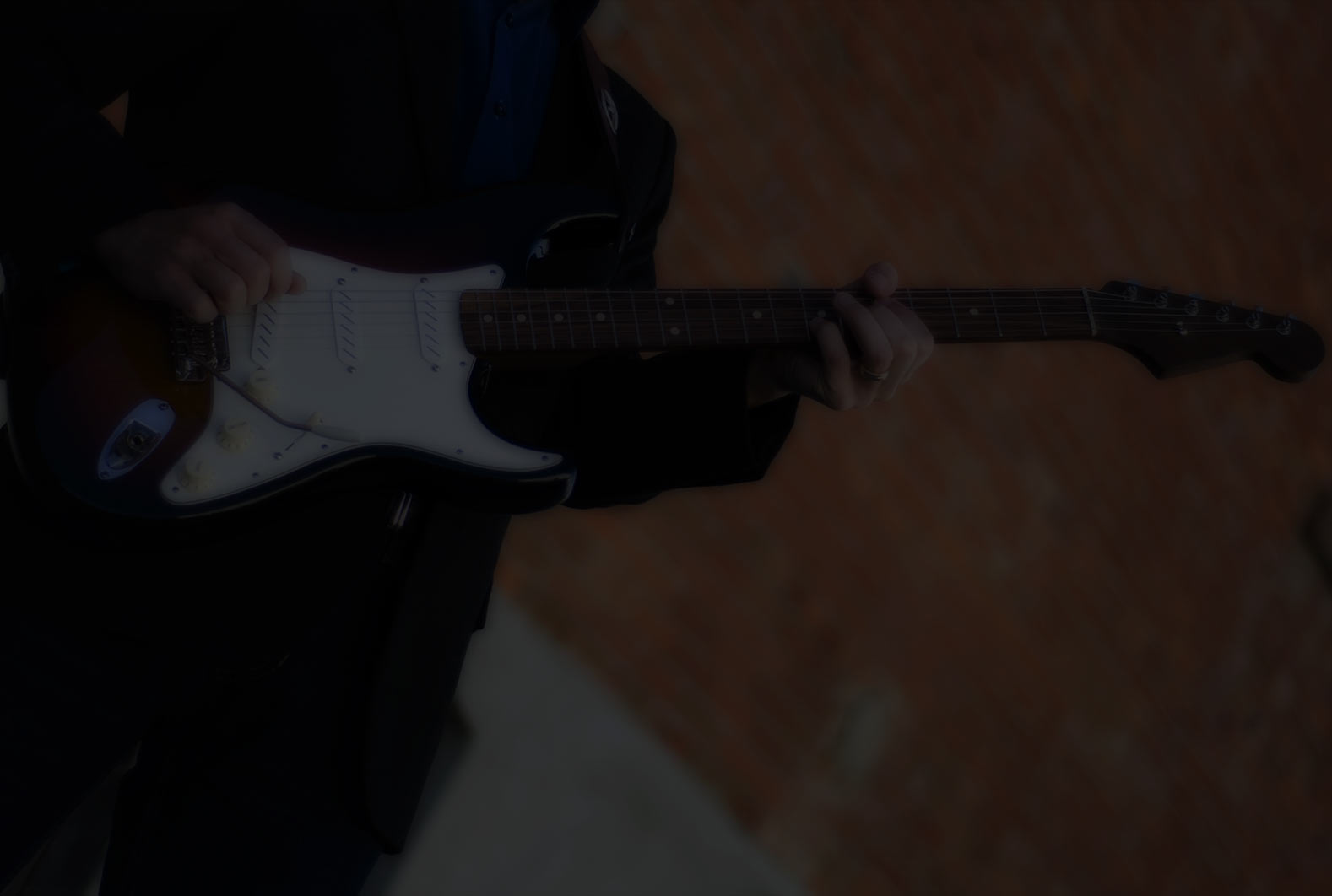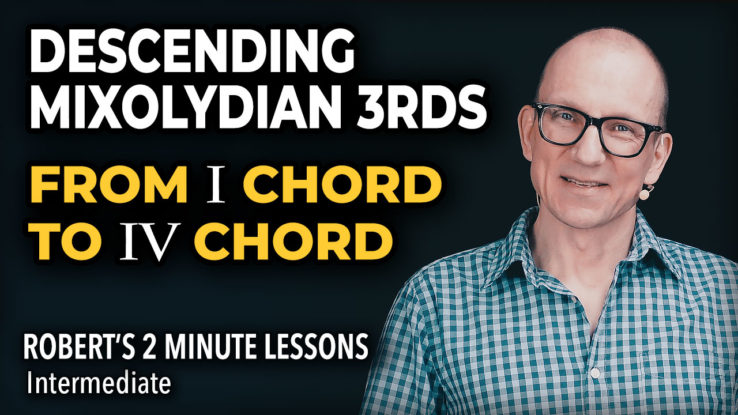Moving 3rds around is a useful concept!
Country players often play these types of runs. Works great in blues too of course, and most of the roots based music – R&B, Gospel, Folk-rock, Americana, etc.
Mixolydian? Isn’t that an oriental dish?
Nope, it’s a mode of the major scale. If you are not familiar with this mode, allow me to explain. The Mixolydian mode is the 5th mode of the major scale. It contains a lowered (or flat) 7. It is used frequently over dominant 7th chords.
As mentioned, the mixolydian mode is the 5th mode of the major scale. This means that if we play any major scale and start on the 5th note, we can say that we are playing the mixolydian mode. What major scale is A Mixolydian derived from then? To answer that, you need to think about which major scale is A the fifth note of. I know it can be a bit awkward to think about it that way, which is why I prefer to simply look at it as a major scale that has a lowered 7th. To answer my question – the D major scale has the note A as the 5th note. You can also think of it this way – which chord/key does A7 “want to go to”? The answer is D. Dominant 7 chords usually want to resolve to the I chord.
Remember, the important note is the b7.
The b7 is the note that gives this mode it’s flavour – otherwise it’s the same as the major scale. That is the key to understanding this mode. The b7 is extremely powerful, because it immediately guides the ear. Keep this in mind – don’t use the Mixolydian over major 7 chords, and don’t use the major scale over Dominant 7 chords, because there will be a clash with that b7/major 7.
Descending 3rds Descending 3rds – Soundslice

